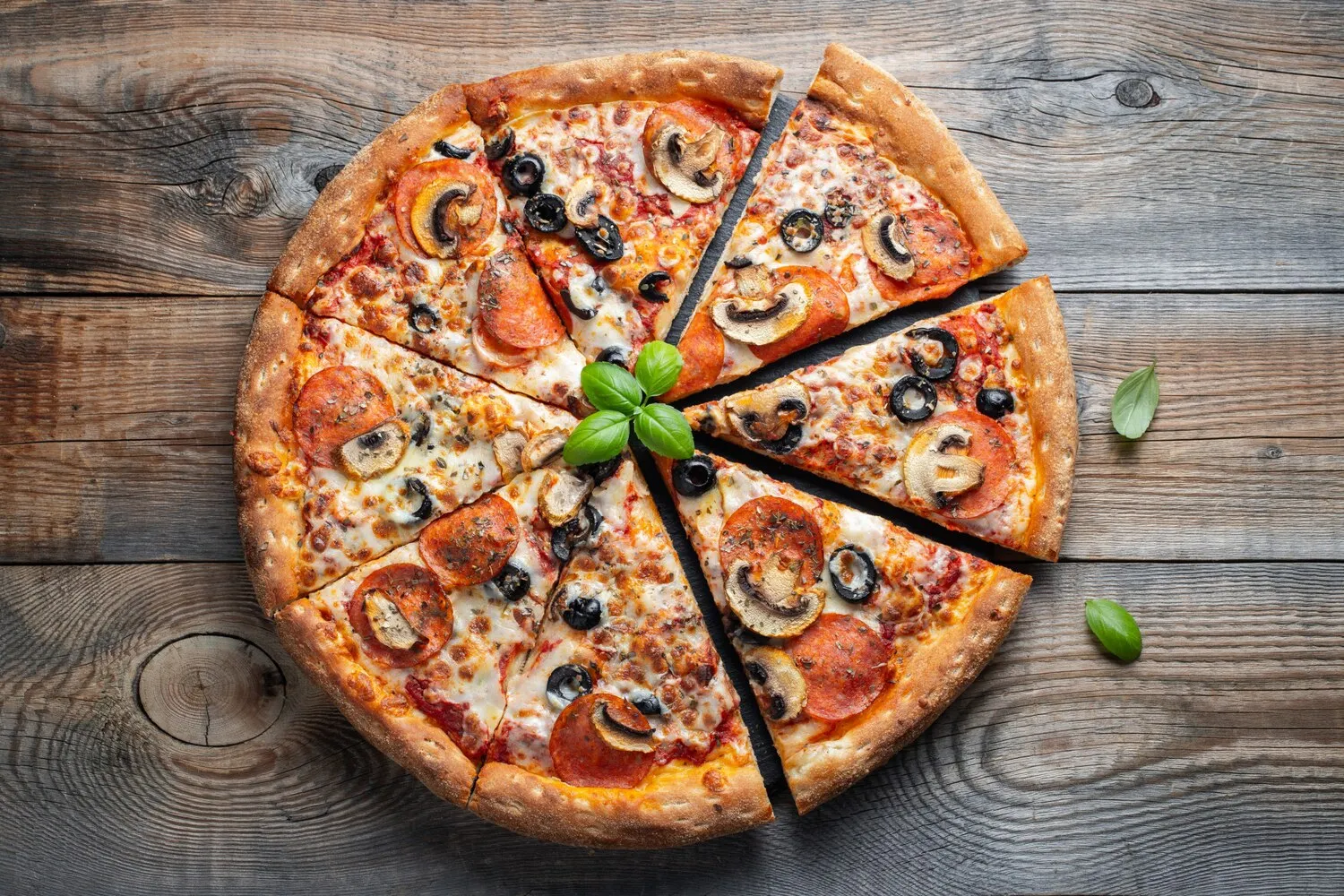
Pizza
Calabouço Restaurante e Pizzaria offers a variety of pizzas. Unfortunately, I don't have information about their specific best or most popular flavors.
Nutrition Facts
* The % Daily Value (DV) tells you how much a nutrient in a serving of food contributes to a daily diet. 2,000 calories a day is used for general nutrition advice.
Calabouço Restaurante e Pizzaria
Pizza's roots can be traced back to ancient civilizations that used flatbreads as a base for various toppings. However, the modern pizza as we know it originated in Naples, Italy, in the 18th or early 19th century. It evolved from simple flatbreads sold to the working class, eventually incorporating tomatoes (which were initially viewed with suspicion) and later, mozzarella cheese. The dish gained international fame in the 20th century, particularly after World War II, with Italian immigrants introducing it to other countries.
Pizza has become a global phenomenon, deeply intertwined with cultural traditions and social gatherings. It represents comfort food, celebration, and sharing, transcending geographical boundaries and adapting to local tastes.
Social Gatherings
Pizza is often associated with informal gatherings, parties, and family meals. Its shareable nature makes it a popular choice for social events.
Regional Variations
Different regions have developed their own unique pizza styles, reflecting local ingredients and culinary preferences. Examples include Neapolitan pizza with its thin crust and simple toppings, and Chicago deep-dish pizza with its thick crust and generous layers of cheese and sauce.
Cultural Symbolism
Pizza has become a symbol of Italian-American culture and is often featured in movies, television shows, and literature.
Pizza offers a versatile flavor profile, generally encompassing savory, acidic, and umami notes, depending on the specific ingredients used. The interplay of dough, sauce, cheese, and toppings creates a complex and satisfying taste experience.
The dominant flavor profiles typically include the yeasty and slightly sweet taste of the dough, the tangy and acidic taste of tomato-based sauce, and the rich, milky, and sometimes salty flavor of mozzarella cheese. Additional toppings contribute a wide array of flavors, from the savory and salty taste of cured meats like pepperoni and prosciutto, to the pungent and earthy taste of mushrooms, the bitter and herbaceous taste of vegetables such as bell peppers and onions, and the spicy heat of chili peppers. Herbs like basil and oregano add aromatic and fresh notes.
Dough Preparation
Use high-quality flour and allow ample time for the dough to rise slowly. A long, slow fermentation develops a more complex flavor and a lighter, airier texture.
Sauce Selection
Opt for fresh, ripe tomatoes and consider making your own sauce. A simple sauce with minimal ingredients allows the flavor of the tomatoes to shine.
Cheese Quality
Use high-quality mozzarella cheese, preferably fresh mozzarella, for the best flavor and texture. Avoid pre-shredded cheese, as it often contains additives that can affect melting and taste.
Oven Temperature
Cook pizza at a high temperature to achieve a crispy crust and melted cheese. A pizza stone or baking steel can help to distribute heat evenly and create a crispier crust.
Explore additional Pizza dishes and restaurants
Explore PizzaDiscover top dining spots and culinary experiences in Curitiba.
Explore CuritibaLearn more about the food culture, restaurant scene, and culinary heritage of Brazil.
Explore Brazil